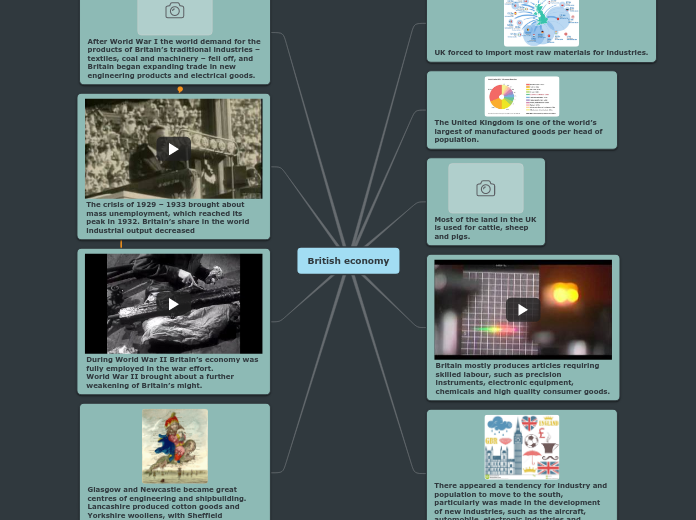British economy
UK forced to import most raw materials for industries.

The United Kingdom is one of the world’s largest of manufactured goods per head of population.

Most of the land in the UK is used for cattle, sheep and pigs.
Britain mostly produces articles requiring skilled labour, such as precision instruments, electronic equipment, chemicals and high quality consumer goods.

There appeared a tendency for industry and population to move to the south, particularly was made in the development of new industries, such as the aircraft, automobile, electronic industries and others.

After World War I the world demand for the products of Britain’s traditional industries – textiles, coal and machinery – fell off, and Britain began expanding trade in new engineering products and electrical goods.
The crisis of 1929 – 1933 brought about mass unemployment, which reached its peak in 1932. Britain’s share in the world industrial output decreased
During World War II Britain’s economy was fully employed in the war effort.
World War II brought about a further weakening of Britain’s might.

